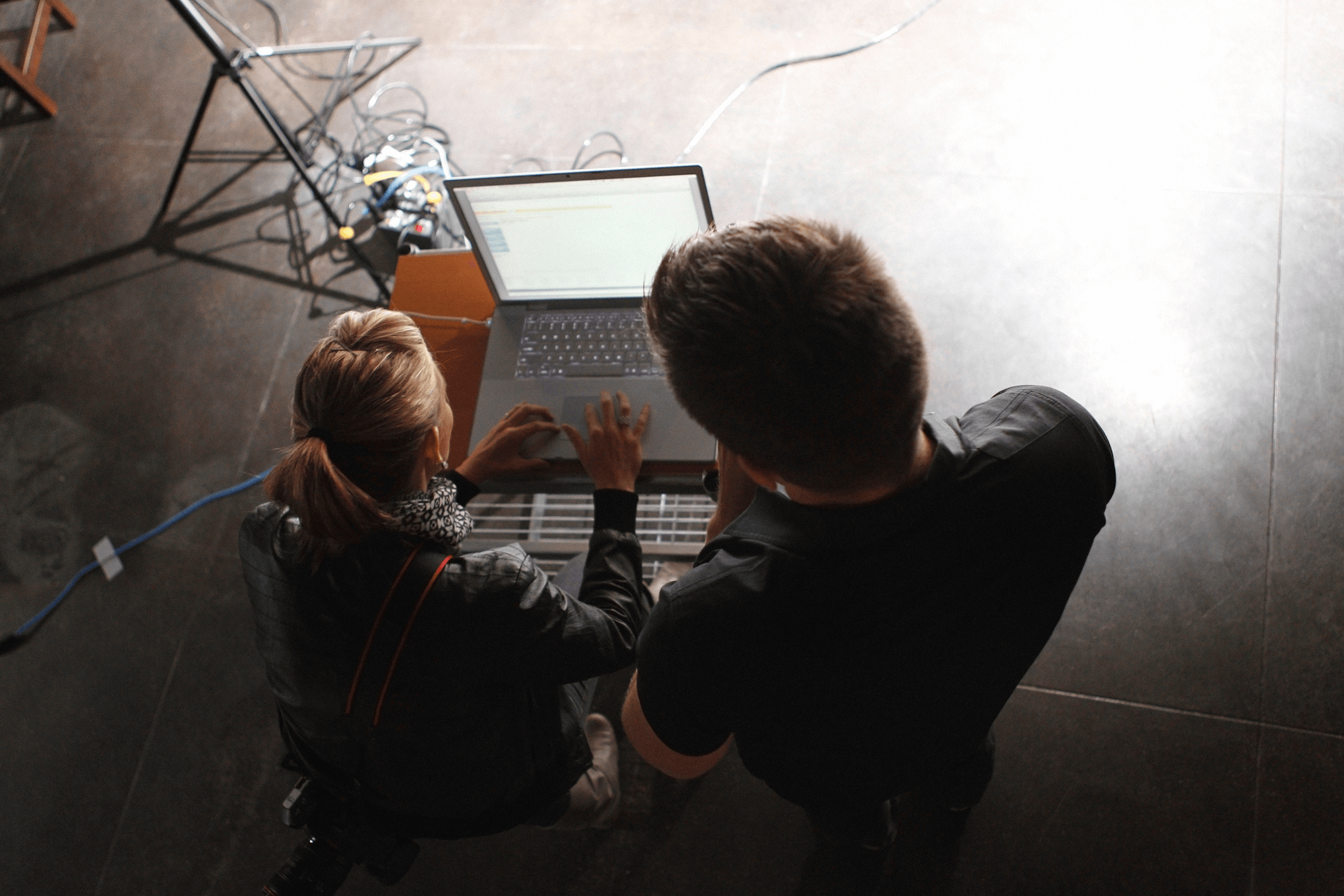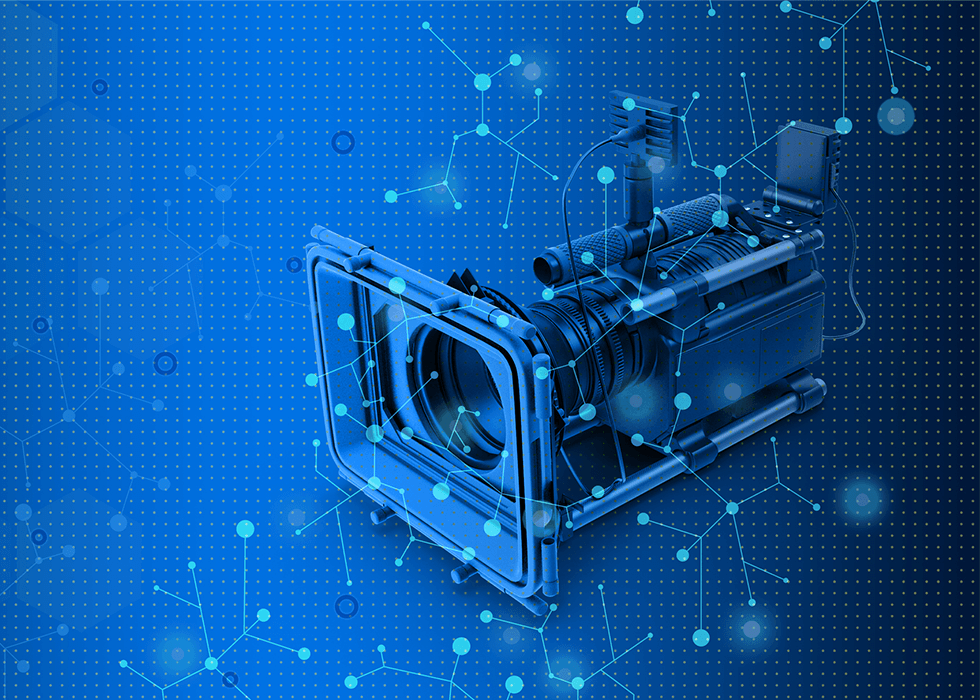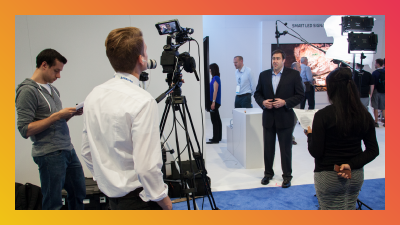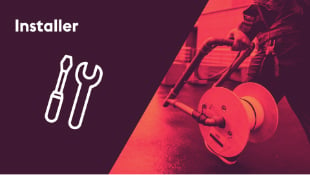
Intro to the Virtual Set: Understanding the Basics
Virtual sets are transforming the media production landscape, expanding what producers can achieve on screen while transforming the way productions operate behind the scenes. Virtual sets enable faster workflows, reduce costs, and provide the kind of flexibility that isn’t possible with traditional physical sets. For AV professionals, they require the ability to merge traditional broadcast tools with gaming engines and real-time rendering to enable fast, flexible production workflows.
What Is a Virtual Set?
A virtual set is a digitally created environment used in place of, or alongside, traditional physical sets. Rather than building a new set for every scene or location, production teams can design realistic, fully customizable backgrounds that can be adjusted quickly, often in real time. These environments can represent anything from a futuristic cityscape to a cozy living room, offering visual flexibility that would be costly and time-consuming to replicate with physical materials.
Virtual sets offer the versatility to bring any setting to life, from a high-tech futuristic city to a sweeping landscape of ice-capped mountains, all without the time and cost of building physical sets. Even prehistoric scenes, such as a dense jungle with lifelike dinosaurs, can be rendered to immerse viewers so completely that it feels as though they've traveled back into ancient history.
Virtual sets provide production teams with the flexibility to adapt to the evolving needs of the production. Unlike traditional sets, which are fixed and limited by space and materials, these sets are fluid, adaptive, and bound only by the imagination. Their digital backdrop can shift instantly to accommodate script changes, creative direction, and visual storytelling needs, without requiring the movement of cast, crews, or the need for travel.
If you’d prefer to dive into virtual production via webinar, sign up for AVIXA’s Broadcast AV Power Hour: Transforming Spaces with Virtual Production Techniques!
How a Virtual Set Works
Virtual sets integrate green screen technology with digitally created environments. Instead of filming actors against real-world backdrops and elaborate physical sets, they’re placed in front of a green screen. The green background is replaced in real-time or after filming with a computer-generated scene. This process relies on a combination of camera tracking systems, real-time rendering, and robust computing hardware.
The camera tracking captures the exact position, movement, and angle of the physical camera, allowing the virtual background to shift naturally with the actor’s movements and create a convincing sense of depth and realism.
The real-time rendering engines used generate high-resolution 3D environments on the fly, allowing directors and crew to see the composite shot immediately, thereby speeding up production and creating numerous creative choices during the filming process.
The Benefits of Using a Virtual Set
Virtual sets address long-standing challenges in media production, opening the door to creative freedoms that were previously difficult or impossible to achieve. These include their ability to provide the following benefits:
Cost Efficiency
On-location shoots involve travel, permit negotiations, unpredictable weather, and logistical complexity, all of which can significantly inflate budgets and cause production delays. Virtual sets consolidate multiple locations into a single, controlled studio environment, slashing expenses and greatly enhancing scheduling flexibility.
Recommended Reading 📖: Case Study: Using Virtual Set Extensions to Shoot an Audi Commercial
Creative Agility
Directors, cinematographers, and production designers can switch lighting conditions, weather, and time of day, and completely transform the backdrop without the need to physically rebuild or repaint sets. On-the-fly adjustments and last-minute creative pivots can be made without added cost or downtime.
Improved Collaboration
Virtual sets enable unprecedented collaboration between departments. Lighting designers can work directly with virtual environments to create lighting scenes that translate to the physical stage, while camera operators can rehearse complex moves before the talent arrives, optimizing shooting schedules and reducing setup time.
Production Efficiency
Virtual sets streamline production timelines. Scenes that might have taken days or weeks to construct on location or in physical sets can be shot in hours. Real-time visualization capabilities reduce the need for post-production compositing and effects work, and reshoots are simplified because lighting and backgrounds can be digitally recreated to avoid continuity concerns.
Quality Control
Virtual environments maintain consistency across multiple takes, eliminating variables like changing natural light and weather conditions. Digital assets can be version-controlled and instantly recalled, ensuring that pickup shots months later match exactly with previously captured footage.
Carbon Footprint Reduction
Virtual sets reduce the need for travel and physical construction, significantly lowering carbon footprints and waste, aligning the production with the company’s environmental sustainability objectives and corporate responsibility goals.
Collectively, these benefits make the use of virtual sets a transformative tool for production teams that seek cost control, creativity, speed, collaboration, and sustainability benefits.
What Is Needed to Build a Virtual Set
Building a virtual set requires a combination of robust technology and thoughtful workflow planning. To create a seamless, immersive environment, production teams must coordinate real-time tools, precise hardware, and carefully structured pre-production workflows. In short, the success of the production depends on what’s on set and how every element is prepared and executed behind the scenes.
The core technological components include:
- Camera Tracking Systems: These systems track every panning, tilting, zooming, and dollying movement of the camera, ensuring the virtual background adjusts in perfect sync to preserve depth and perspective.
- Real-Time Rendering Engines: Virtual production platforms like Unreal Engine or Unity update the 3D environment on the fly, enabling fluid visuals that respond instantly to camera and actor movement.
- LED Volumes: Curved walls made of high-resolution LED panels display the virtual environment live on set, providing realistic lighting, reflections, and immersive backgrounds.
- Compositing Tools: Programs like Nuke or After Effects blend live-action footage with virtual elements, refining the final image and enabling creative enhancements.
- High-Performance Computing Hardware: Robust GPUs and processors are required to handle real-time rendering, playback, and simulation without delay.
- Precision Lighting Equipment: Lighting setups must match digital environments. LED panels and digital controls ensure consistency between physical and virtual elements.
- Audio Capture and Monitoring Systems: Clear, professional sound remains essential. Wireless microphones, boom mics, and live mixing tools ensure high-quality audio.
- Collaborative Creative Team: Directors, VFX artists, cinematographers, and engineers must work in tight coordination, each contributing to the seamless integration of real and digital elements.
Tips for Effectively Using Virtual Sets
Even the most advanced virtual production tools won’t deliver successful results without structured preparation. To ensure a smooth, follow these best practices:
- Include Effective Digital Asset Management: Gather, organize, and version all 3D models, textures, background elements, and media files in a shared repository to ensure the creative team is always working from the most current materials.
- Block Scenes in Advance: Map out where actors will move and where cameras will be placed to ensure their actions align precisely with the virtual environment.
- Conduct Full Technical Rehearsals: Run end-to-end tests of the camera tracking, lighting, rendering, and display systems to expose and resolve any technical issues before production begins.
- Design Lighting with Integration in Mind: Match the direction, color temperature, and intensity of physical lights with virtual lighting sources to maintain a believable, cohesive look on screen.
- Calibrate Tracking Systems Thoroughly: Test and adjust tracking sensors and data accuracy under different lighting conditions and movement styles to avoid drift or misalignment during filming.
- Integrate Timecode and Metadata Early: Ensure that all footage captured is embedded with synchronized timecode and relevant metadata to streamline post-production tasks, such as compositing, editing, and color correction.
Creating a successful virtual set requires the right mix of high-performance tools and deliberate planning to bring stories to life in a digital world. When both the technological components and workflow planning are handled with care, the result is a flexible production environment that enhances storytelling and redefines what’s possible on screen.

Examples of Virtual Set Applications
Virtual sets have become prevalent across various media production sectors. Valued for their adaptability and cost efficiency, they are being used in these and numerous other industries:
- Broadcast Television: Virtual studios are now a staple in news, weather, and sports broadcasts. Dynamic real-time graphics and the ability to change scenes instantly enhance storytelling and viewer engagement.
- Film and Episodic TV: Virtual sets and LED volumes are increasingly used in feature films and streaming series on platforms such as Netflix, Amazon Prime, and HBO, enabling the creation of immersive, photorealistic environments that save time, reduce costs, and expand creative possibilities.
- Advertising: Virtual sets enable brands to create stylized, visually compelling environments that can be quickly switched and tailored to different campaigns, thereby accelerating production while maintaining high creative standards.
- Live Events and Performances: Music concerts, esports competitions, and award shows are increasingly enhanced with virtual stages and augmented reality, captivating audiences with interactive and visually stunning experiences.
- Corporate and Educational Media: Virtual sets enable polished corporate presentations, remote training programs, and internal communications that require professional, high-quality visuals without the need for extensive physical setups.
- Video Game Cinematics and Marketing: Game developers utilize virtual sets to produce trailers and cutscenes of cinematic quality, leveraging real-time engines to expedite production and facilitate creative iteration.
- Virtual Tours and Real Estate: Realtors and architectural firms use virtual sets to simulate spaces for walkthroughs and design presentations, offering immersive previews before construction or travel ever takes place.
- Training and Simulation: High-risk industries, such as aviation, the military, and emergency services, employ virtual environments to simulate realistic scenarios, allowing for safe and practical training in controlled settings.
- Fashion and Runway Shows: Fashion brands have embraced virtual staging to create digital runway shows and stylized backdrops for launches, expanding their reach and creative potential without the constraints of traditional sets.
- Religious and Faith-Based Broadcasts: Many faith communities are using virtual sets to deliver engaging and professional broadcasts of worship services, reaching larger audiences with visually enhanced spiritual content.
These examples demonstrate the broad application and growing influence of virtual sets across multiple industries.
Case Study: Netflix’s 1899 Series
In 2020, Netflix’s 1899 production team scrapped international shoot plans due to the pandemic and pivoted to a virtual custom-built LED volume stage in Germany. They recreated ocean backdrops, ship interiors, and weather, with some actors even reporting seasickness. The result was a visually striking series that reduced production time, avoided logistical hurdles, and preserved cinematic scale. Its success showed how virtual production can unlock creative freedom without sacrificing quality.
Virtual Sets: The Takeaway
For audio-visual professionals, virtual sets represent both opportunity and necessity. The convergence of traditional broadcast technology with gaming engines and real-time rendering requires new expertise in areas previously outside typical AV skill sets.
As virtual set technology continues to evolve, it will fuel innovation and broaden the scope of visual storytelling, changing how productions are made to expand storylines and how vividly they can be brought to life.
Interested in learning more about virtual production? Check out AVIXA’s Virtual Production Power Hour with Ross Video!
Photo credit: Getty Images/powerofforever






.png?sfvrsn=519c2f3c_1)


